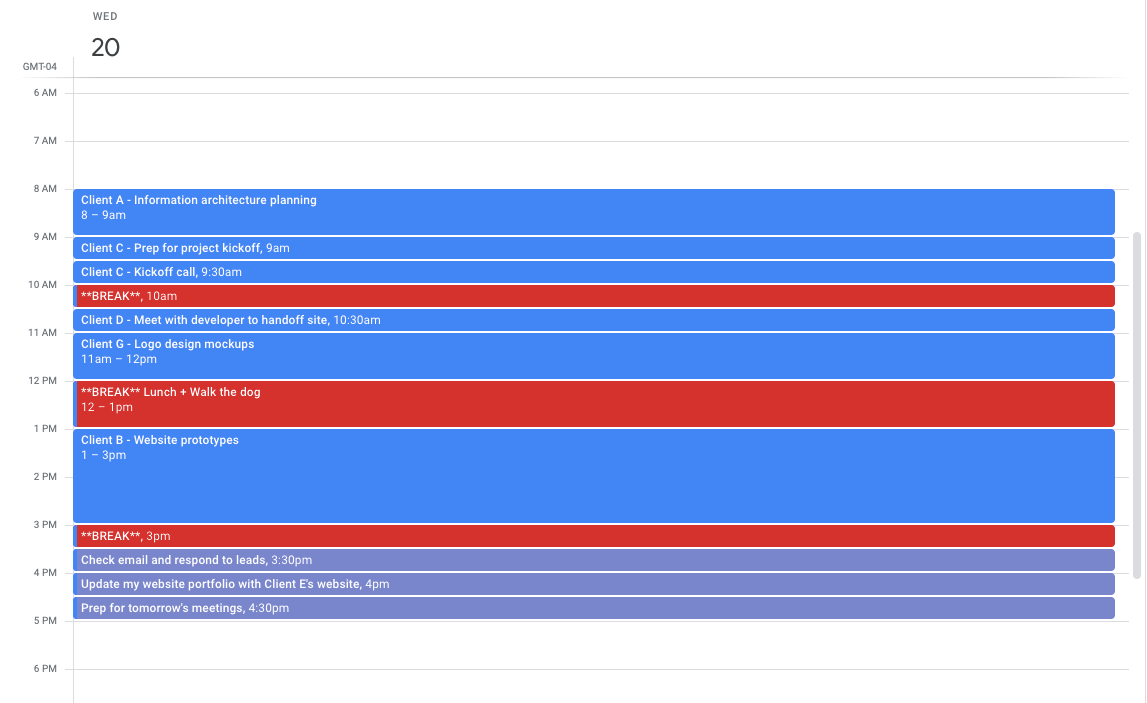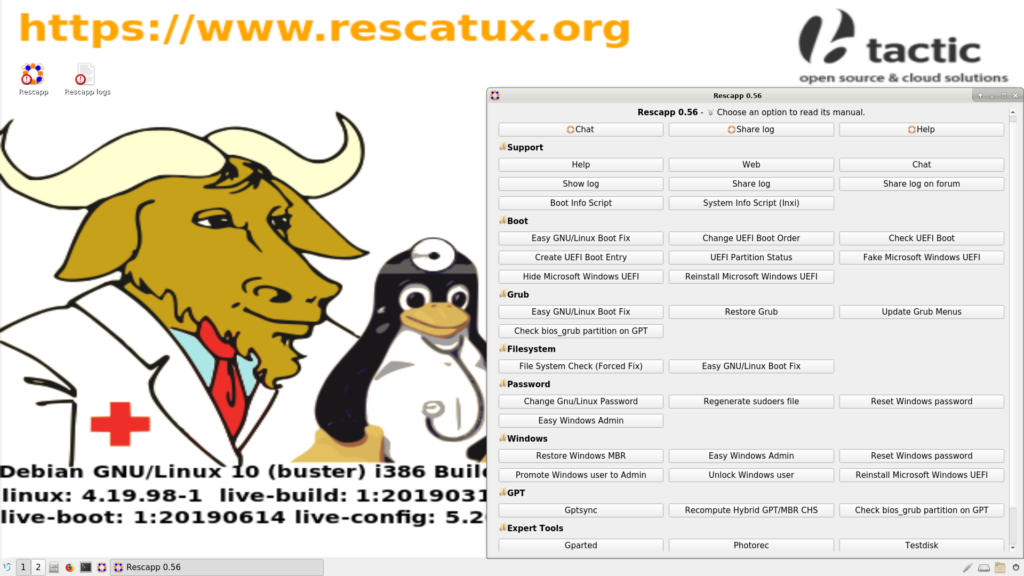Among the many changes that IT Administrators face when moving to Office 365, deployment of the Office suite tends to raise the most questions. Is Office 365 Pro Plus the same as Office Pro Plus? What is Click-to-Run? Do my users need to download Office from the Office 365 portal? Do I still have control over the deployment of Office? In this blog, I will walk through deploying the Click-to-Run version of Microsoft Office 365 Pro Plus with System Center Configuration Manager (SCCM).
A Quick Note on Licensing
Just to close this thread. With Windows 10 1809 and higher, no more need to run the Remove-AppxProvisionedPackage -Online cmdlet, the Remove-AppxPackage -AllUsers cmdlet will remove both the provisioned package and from users. Office install hangs or is stuck at 90%. If Office is taking a long time to install you may be on a slow connection or you another install or update may be happening in the background. See Office is taking long to install or Office hangs at 90% for possible solutions. Known issues with Office and Windows 10. See Known issues with Office.
Office 365 Pro Plus licensing gives you the rights to the latest version of Office Pro Plus. So, if you own a licensing plan that includes Office 365 Pro Plus, the version that you would be deploying today is Office Pro Plus 2016.
What is Click-to-Run?
Click-to-Run for Office 365 products is based on core virtualization and streaming Microsoft Application Virtualization (App-V) technologies. Click-to-Run resources run in an isolated virtual environment on the local operating system.
Click-to-Run virtualization provides the following advantages:
- Isolation of resources in a virtual environment allows for coexistence with earlier versions of Office, and improves the cleanup and restore processes.
- Extension points to the computer are published so Office is more integrated. This allows for local add-ins to be integrated with the virtual environment.
- Streaming helps improve performance. The Office package is divided and is uncompressed over time, which optimizes network bandwidth and CPU usage.
Packaging Office 365 Pro Plus for Deployment
To package Office 365 Pro Plus, we’ll need to use Microsoft’s Office Deployment Tool. This tool will allow us to download the source files for our SCCM package and reference a configuration file during the installation.
- Start by downloading the Office Deployment Tool from the following this location.
- Run the downloaded “officedeploymenttool.exe” file.
- Accept the License Terms, click ‘continue’ and choose the location to extract the tool. I chose “C:Office”. I will refer to this folder often in these steps.
You can find more details and configuration options for the Office Deployment Tool here.
Now that the Office Deployment Tool has been extracted to your chosen location, you’ll need to edit the configuration file. Navigate to “C:Office” and edit the “configuration.xml” file to the following:
This will download the 32-bit source files to “C:Office”.
Next, launch an administrative command prompt, change the location to the location of the deployment tool and run the following command: Setup.exe /download configuration.xml
NOTE: Make sure you have all the files in the selected folder before running the command or you may see an error during installation. I have seen some issues with the “stream.x86.x-none.dat” file failing to download and had to run it again.
The last step in our packaging process is to edit the “configuration.xml” file one more time. Nfs 3 hot pursuit free download. Remove the source location from the “configuration.xml” file. This will force the tool to use the cache folder rather than preloading the files to “C:Office”.
Creating an SCCM Application for Office 365
Copy the “C:Office” folder to your software source share.
NOTE: Keep the root package file with the setup and configuration file and the Office folder containing the source files.
You can find more details here.
Create an application for Office 365 Pro Plus in Configuration Manager
Now that our software package is created and stored in a central location, we need to create the application in Configuration Manager.
- In the Configuration Manager console, choose Software Library > Application Management > Applications.
- On the Home tab, in the Create group, choose Create Application.
- On the General page of the Create Application Wizard, select Manually specify the application information, and then choose Next.
- On the General information page, enter a name for the application, enter any optional information, and then choose Next.
- On the Application Catalog page, provide the information that’s appropriate for your environment, and then choose Next.
- On the Deployment Types page, choose Next (you will add a deployment type later).
- On the Summary page, review the settings you’ve chosen, and then choose Next to create the application.
- After the application is created, on the Completion page, choose Close.
Creating a deployment type for your application
After creating the application in SCCM, you’ll need to create a deployment type to determine how the application will be installed.
- In the Configuration Manager console, choose Software Library > Application Management > Applications.
- Select the Office 365 Pro Plus application, and then on the Home tab, in the Application group, choose Create Deployment Type.
- On the General page of the Create Deployment Type Wizard, in the Type list, select Script Installer, and then choose Next.
- On the General Information page, enter a name for the deployment type, enter any optional information, and then choose Next.
- On the Content page, do the following:
- In the Content location box, enter the network share where you put the Office Deployment Tool, your “configuration.xml” file, and the Office 365 Pro Plus installation files that you downloaded from the Internet.
- In the Installation program box, enter the following text: setup.exe /configure configuration.xml
- After you enter this information, choose Next.
- On the Detection Method page, choose Add Clause.
- In the Detection Rule dialog box, do the following:
- In the Setting Type list, select Registry.
- In the Hive list, select HKEY_LOCAL_MACHINE.
- In the Key box, enter the following text: SoftwareMicrosoftWindowsCurrentVersionUninstallO365ProPlusRetail – en-us
- Select the Use (Default) registry key value for detection check box
- After you enter this information, choose OK, and then on the Detection Method page, choose Next.
- On the User Experience page, in the Installation behavior list, select Install for system, and then choose Next.
- If you want to specify any requirements or dependencies for the deployment type, choose Next to go through those pages in the wizard. Otherwise, choose Summary.
- On the Summary page, review the settings you’ve chosen, choose Next, and then choose Close.
Once this is done you can update your Distribution points and you are all set to create a deployment for the new Office 2016 Pro Plus Click-To-Run package. More information on that here.
Note: In the ConfigMgr Technical Preview, all the above steps can be accomplished natively within the SCCM console
Moving to the cloud represents a big change for many IT departments. Developing the skills to adapt to cloud infrastructure can take time, but hopefully this blog post can help to clarify the change. Have further questions? Need help implementing these changes or others? Give us a call at 630.832.0075 or email us at info@peters.com.
-->Applies to
Microsoft Stuck On Starting
- Windows 10
- Windows 10 Mobile


Windows provisioning makes it easy for IT administrators to configure end-user devices without imaging. Using Windows provisioning, an IT administrator can easily specify desired configuration and settings required to enroll the devices into management and then apply that configuration to target devices in a matter of minutes. It is best suited for small- to medium-sized businesses with deployments that range from tens to a few hundred computers.
A provisioning package (.ppkg) is a container for a collection of configuration settings. With Windows 10, you can create provisioning packages that let you quickly and efficiently configure a device without having to install a new image.
Provisioning packages are simple enough that with a short set of written instructions, a student or non-technical employee can use them to configure their device. This can result in a significant reduction in the time required to configure multiple devices in your organization.

The Windows Assessment and Deployment Kit (ADK) for Windows 10 includes the Windows Configuration Designer, a tool for configuring provisioning packages. Windows Configuration Designer is also available as an app in the Microsoft Store.
New in Windows 10, version 1703
- The tool for creating provisioning packages is renamed Windows Configuration Designer, replacing the Windows Imaging and Configuration Designer (ICD) tool. The components for creating images have been removed from Windows Configuration Designer, which now provides access to runtime settings only.
- Windows Configuration Designer can still be installed from the Windows ADK. You can also install it from the Microsoft Store.
- Windows Configuration Designer adds more wizards to make it easier to create provisioning packages for specific scenarios. See What you can configure for wizard descriptions.
- The Provision desktop devices wizard (previously called Simple provisioning) now enables joining Azure Active Directory (Azure AD) domains and also allows you to remove non-Microsoft software from Windows desktop devices during provisioning.
- When provisioning packages are applied to a device, a status screen indicates successful or failed provisioning.
- Windows 10 includes PowerShell cmdlets that simplify scripted provisioning. Using these cmdlets, you can add provisioning packages, remove provisioning packages and generate log files to investigate provisioning errors.
- The Provision school devices wizard is removed from Windows Configuration Designer. Instead, use the Setup School PCs app from the Microsoft Store.
Benefits of provisioning packages
Provisioning packages let you:
Quickly configure a new device without going through the process of installing a new image.
Save time by configuring multiple devices using one provisioning package.
Quickly configure employee-owned devices in an organization without a mobile device management (MDM) infrastructure.
Set up a device without the device having network connectivity.
Provisioning packages can be:
Installed using removable media such as an SD card or USB flash drive.
Attached to an email.
Downloaded from a network share.
Deployed in NFC tags or barcodes.
What you can configure
Configuration Designer wizards
The following table describes settings that you can configure using the wizards in Windows Configuration Designer to create provisioning packages.
| Step | Description | Desktop wizard | Mobile wizard | Kiosk wizard | HoloLens wizard |
| Set up device | Assign device name, enter product key to upgrade Windows, configure shared used, remove pre-installed software | (Only device name and upgrade key) | |||
| Set up network | Connect to a Wi-Fi network | ||||
| Account management | Enroll device in Active Directory, enroll device in Azure Active Directory, or create a local administrator account | ||||
| Bulk Enrollment in Azure AD | Enroll device in Azure Active Directory Before you use a Windows Configuration Designer wizard to configure bulk Azure AD enrollment, set up Azure AD join in your organization. | ||||
| Add applications | Install applications using the provisioning package. | ||||
| Add certificates | Include a certificate file in the provisioning package. | ||||
| Configure kiosk account and app | Create local account to run the kiosk mode app, specify the app to run in kiosk mode | ||||
| Configure kiosk common settings | Set tablet mode, configure welcome and shutdown screens, turn off timeout settings | ||||
| Developer Setup | Enable Developer Mode. |
Note
After you start a project using a Windows Configuration Designer wizard, you can switch to the advanced editor to configure additional settings in the provisioning package.
Configuration Designer advanced editor
The following table provides some examples of settings that you can configure using the Windows Configuration Designer advanced editor to create provisioning packages.
| Customization options | Examples |
|---|---|
| Bulk Active Directory join and device name | Join devices to Active Directory domain and assign device names using hardware-specific serial numbers or random characters |
| Applications | Windows apps, line-of-business applications |
| Bulk enrollment into MDM | Automatic enrollment into a third-party MDM service* |
| Certificates | Root certification authority (CA), client certificates |
| Connectivity profiles | Wi-Fi, proxy settings, Email |
| Enterprise policies | Security restrictions (password, device lock, camera, and so on), encryption, update settings |
| Data assets | Documents, music, videos, pictures |
| Start menu customization | Start menu layout, application pinning |
| Other | Home and lock screen wallpaper, computer name, domain join, DNS settings, and so on |
* Using a provisioning package for auto-enrollment to Microsoft Endpoint Configuration Manager is not supported. Use the Configuration Manager console to enroll devices.
For details about the settings you can customize in provisioning packages, see Windows Provisioning settings reference.
Changes to provisioning in Windows 10, version 1607
Note
Microsoft Office 2016 Install Stuck On Running Package Scripts
This section is retained for customers using Windows 10, version 1607, on the Current Branch for Business. Some of this information is not applicable in Windows 10, version 1703.
Windows ICD for Windows 10, version 1607, simplified common provisioning scenarios.
Windows ICD in Windows 10, version 1607, supported the following scenarios for IT administrators:
- Simple provisioning – Enables IT administrators to define a desired configuration in Windows ICD and then apply that configuration on target devices. The simple provisioning wizard makes the entire process quick and easy by guiding an IT administrator through common configuration settings in a step-by-step manner.
Advanced provisioning (deployment of classic (Win32) and Universal Windows Platform (UWP) apps, and certificates) – Allows an IT administrator to use Windows ICD to open provisioning packages in the advanced settings editor and include apps for deployment on end-user devices.
Mobile device enrollment into management - Enables IT administrators to purchase off-the-shelf retail Windows 10 Mobile devices and enroll them into mobile device management (MDM) before handing them to end-users in the organization. IT administrators can use Windows ICD to specify the management end-point and apply the configuration on target devices by connecting them to a Windows PC (tethered deployment) or through an SD card. Supported management end-points include:
- Microsoft Intune (certificate-based enrollment)
- AirWatch (password-string based enrollment)
- Mobile Iron (password-string based enrollment)
- Other MDMs (cert-based enrollment)
Note
Windows ICD in Windows 10, version 1607, also provided a wizard to create provisioning packages for school PCs. To learn more, see Set up students' PCs to join domain.
Learn more
For more information about provisioning, watch the following videos:
Microsoft Office Package
Related topics
